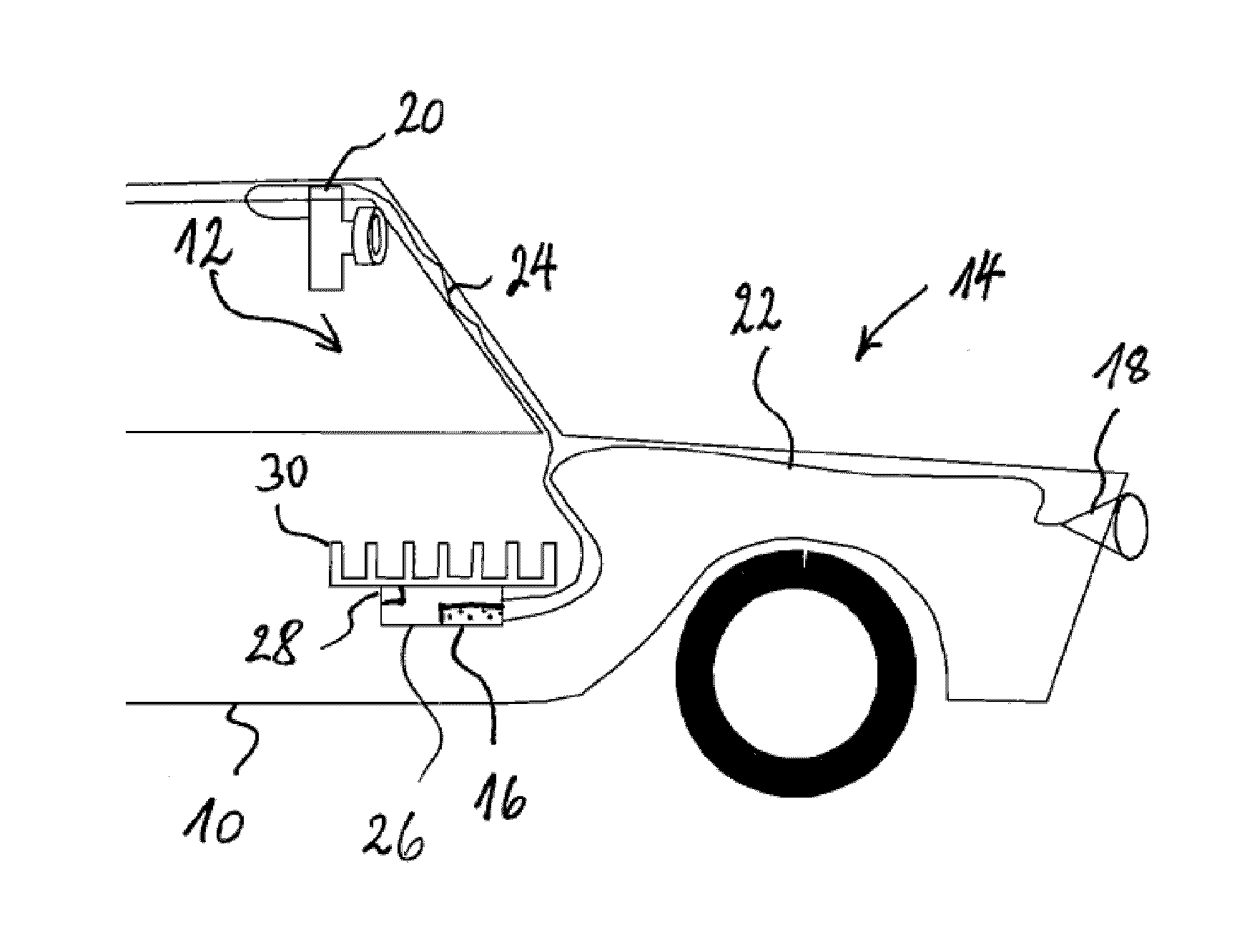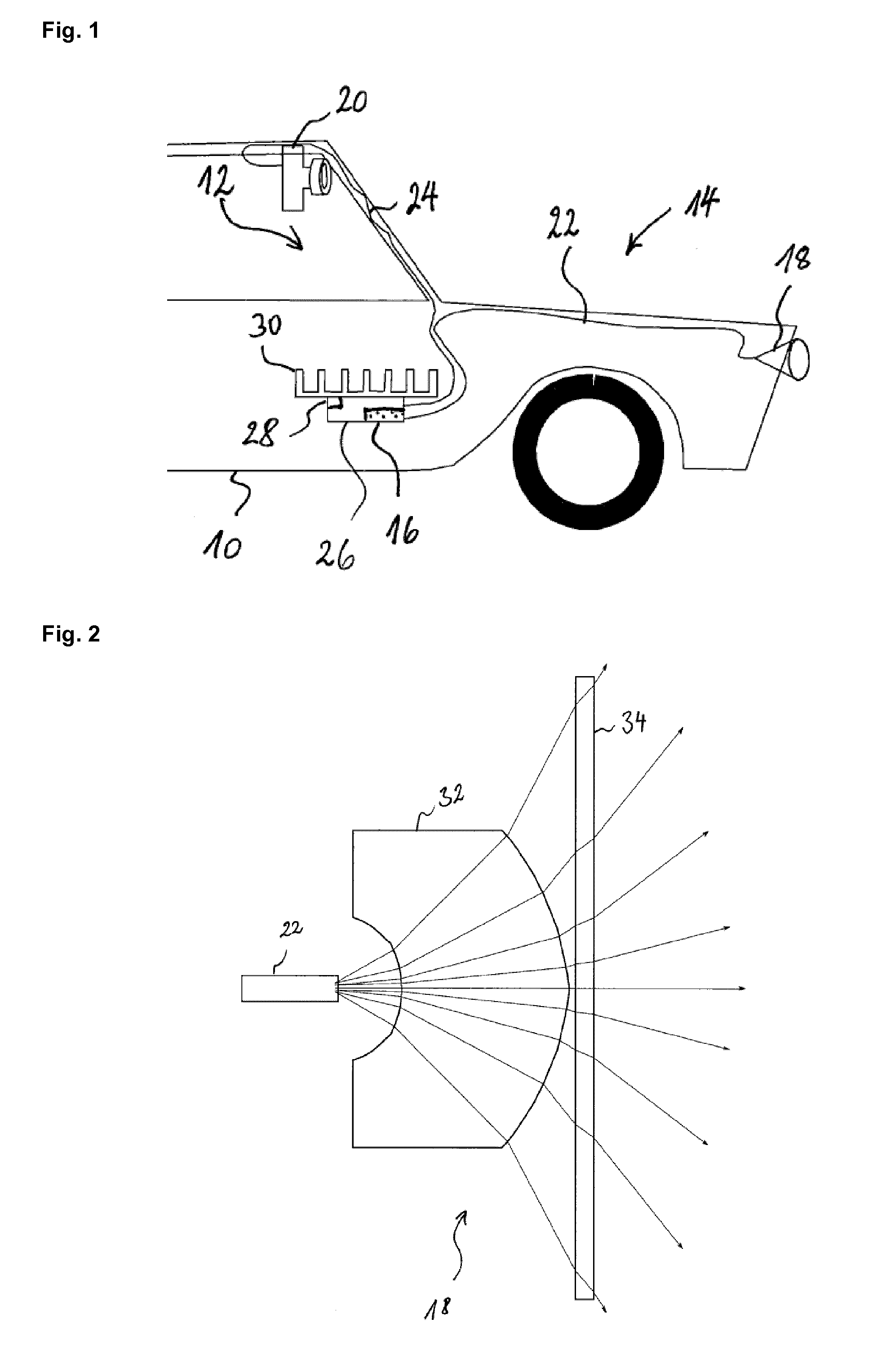Driver assistance system comprising an optical detector with active scene illumination
a technology of optical detector and driver assistance, which is applied in the direction of distance measurement, instruments, and using reradiation, etc., can solve the problems of reducing the life of the device, reducing the efficiency of electrical-to-optical power conversion of typical devices, and reducing the available space for integrating the illumination uni
- Summary
- Abstract
- Description
- Claims
- Application Information
AI Technical Summary
Benefits of technology
Problems solved by technology
Method used
Image
Examples
Embodiment Construction
[0024]Most modern ADAS employ optical detection systems, which require an active illumination in the infrared wavelength range. The data of several detection systems, three-dimensional and / or two-dimensional, is evaluated to obtain a greater accuracy and reliability required for safety functions like automatic emergency braking. Three-dimensional imagers, which use the time-of-flight method require an active illumination which is amplitude-modulated or pulsed in the HF frequency range. For these systems, it is typical that the illumination module is built in a single unit, which comprises the light source, its driver and a dedicated optical system to transform the output of the light source device into the light field distribution required in the scene. Similarly, sensor systems using the structured-light imaging method employ illumination units, which include light source, driver electronics and projection optics.
[0025]Since the electrical-to-optical power conversion efficiency of ...
PUM
 Login to View More
Login to View More Abstract
Description
Claims
Application Information
 Login to View More
Login to View More - R&D
- Intellectual Property
- Life Sciences
- Materials
- Tech Scout
- Unparalleled Data Quality
- Higher Quality Content
- 60% Fewer Hallucinations
Browse by: Latest US Patents, China's latest patents, Technical Efficacy Thesaurus, Application Domain, Technology Topic, Popular Technical Reports.
© 2025 PatSnap. All rights reserved.Legal|Privacy policy|Modern Slavery Act Transparency Statement|Sitemap|About US| Contact US: help@patsnap.com



